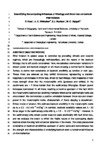Quantifying the competing influences of lithology and throw rate on bedrock river incision.
| dc.contributor.author | Kent, E | |
| dc.contributor.author | Whittaker, A | |
| dc.contributor.author | Boulton, Sarah | |
| dc.contributor.author | Alcicek, MC | |
| dc.date.accessioned | 2020-09-28T12:43:51Z | |
| dc.date.issued | 2020-12-09 | |
| dc.identifier.issn | 0016-7606 | |
| dc.identifier.issn | 1943-2674 | |
| dc.identifier.uri | http://hdl.handle.net/10026.1/16434 | |
| dc.description | No embargo required. | |
| dc.description.abstract |
<jats:title>Abstract</jats:title><jats:p>River incision in upland areas is controlled by prevailing climatic and tectonic regimes, which are increasingly well described, and the nature of the bedrock lithology, which is still poorly constrained. Here, we calculated downstream variations in stream power and bedrock strength for six rivers crossing a normal fault in western Turkey, to derive new constraints on bedrock erodibility as function of rock type. These rivers were selected because they exhibit knick zones representing a transient response to an increase in throw rate, driven by fault linkage. Field measures of rock mass strength showed that the metamorphic units (gneisses and schists) in the catchments are ∼2 times harder than the sedimentary lithologies. Stream power increases downstream in all rivers, reaching a maxima upstream of the fault within the metamorphic bedrock but declining markedly where softer sedimentary rocks are encountered. We demonstrate a positive correlation between throw rate and stream power in the metamorphic rocks, characteristic of rivers obeying a detachment-limited model of erosion. We estimated bedrock erodibility in the metamorphic rocks as kb = 2.2–6.3 × 10−14 m s2 kg−1; in contrast, bedrock erodibility values were 5–30 times larger in the sedimentary units, with kb = 1.2–15 × 10−13 m s2 kg−1. However, in the sedimentary units, stream power does not scale predictably with fault throw rate, and we evaluated the extent to which the friable nature of the outcropping clastic bedrock alters the long-term erosional dynamics of the rivers. This study places new constraints on bedrock erodibilities upstream of active faults and demonstrates that the strength and characteristics of underlying bedrock exert a fundamental influence on river behavior.</jats:p> | |
| dc.format.extent | 1649-1664 | |
| dc.language | en | |
| dc.language.iso | en | |
| dc.publisher | Geological Society of America | |
| dc.title | Quantifying the competing influences of lithology and throw rate on bedrock river incision. | |
| dc.type | journal-article | |
| dc.type | Journal Article | |
| plymouth.author-url | https://www.webofscience.com/api/gateway?GWVersion=2&SrcApp=PARTNER_APP&SrcAuth=LinksAMR&KeyUT=WOS:000672732700017&DestLinkType=FullRecord&DestApp=ALL_WOS&UsrCustomerID=11bb513d99f797142bcfeffcc58ea008 | |
| plymouth.issue | 7-8 | |
| plymouth.volume | 133 | |
| plymouth.publisher-url | https://pubs.geoscienceworld.org/gsa/gsabulletin/article-abstract/doi/10.1130/B35783.1/593152/Quantifying-the-competing-influences-of-lithology?redirectedFrom=fulltext | |
| plymouth.publication-status | Published | |
| plymouth.journal | Bulletin of the Geological Society of America | |
| dc.identifier.doi | 10.1130/B35783.1 | |
| plymouth.organisational-group | /Plymouth | |
| plymouth.organisational-group | /Plymouth/Faculty of Science and Engineering | |
| plymouth.organisational-group | /Plymouth/Faculty of Science and Engineering/School of Geography, Earth and Environmental Sciences | |
| plymouth.organisational-group | /Plymouth/REF 2021 Researchers by UoA | |
| plymouth.organisational-group | /Plymouth/REF 2021 Researchers by UoA/UoA07 Earth Systems and Environmental Sciences | |
| plymouth.organisational-group | /Plymouth/Users by role | |
| plymouth.organisational-group | /Plymouth/Users by role/Academics | |
| dcterms.dateAccepted | 2020-09-22 | |
| dc.rights.embargodate | 2021-1-19 | |
| dc.identifier.eissn | 1943-2674 | |
| dc.rights.embargoperiod | Not known | |
| rioxxterms.versionofrecord | 10.1130/B35783.1 | |
| rioxxterms.licenseref.uri | http://www.rioxx.net/licenses/all-rights-reserved | |
| rioxxterms.licenseref.startdate | 2020-12-09 | |
| rioxxterms.type | Journal Article/Review |


